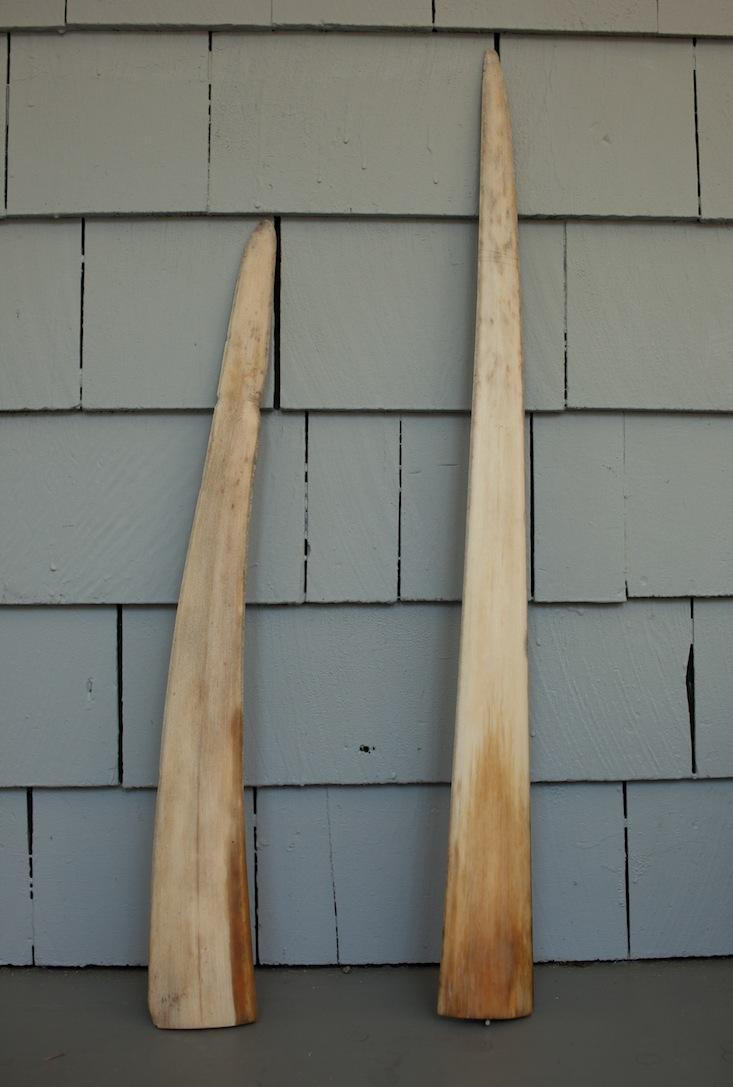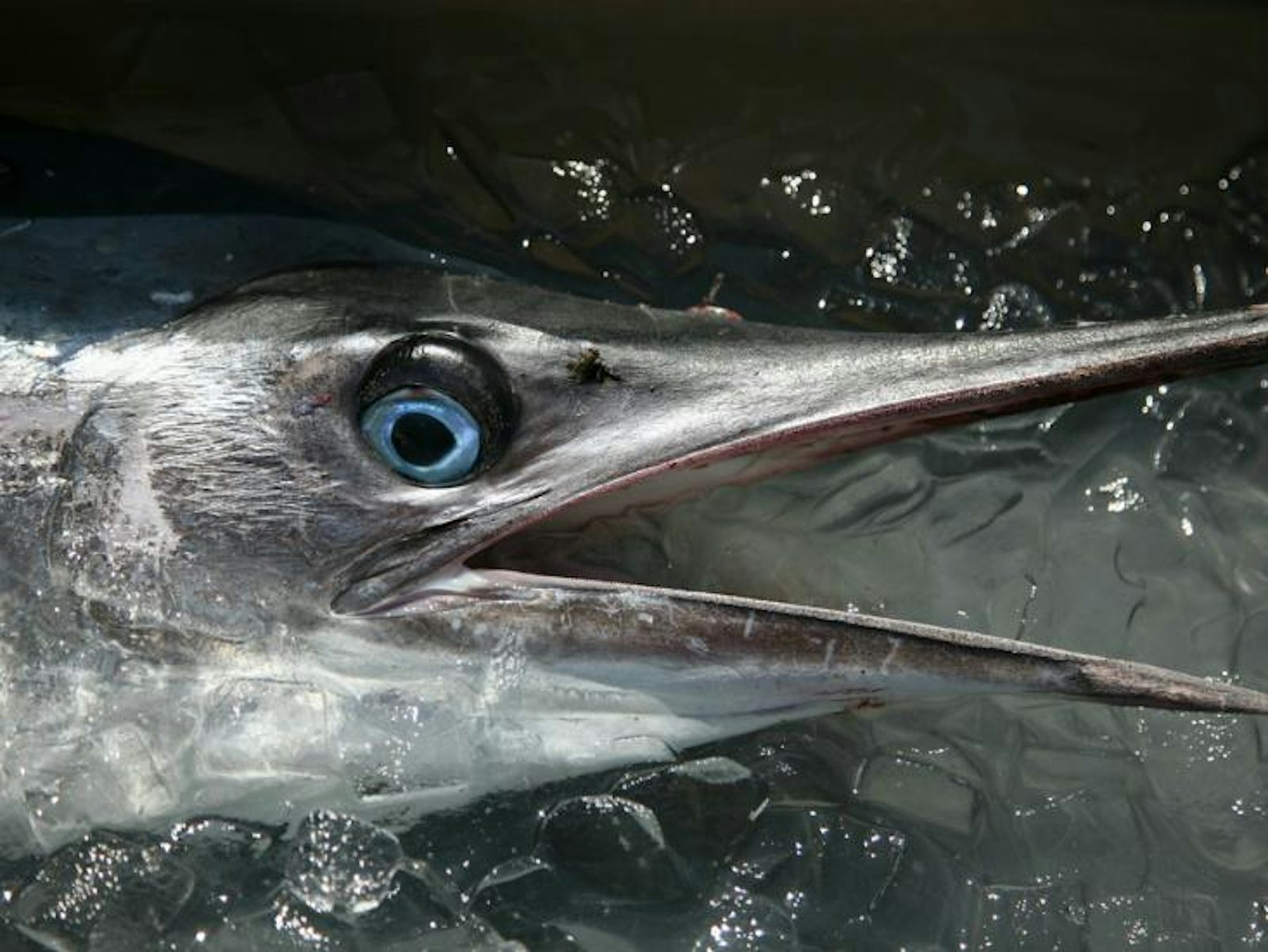A few weeks we asked you for your most unlikely stories—the kinds of things that make you scratch your head and think, “What are the chances?” Last week we published a birthday coincidence. Here’s another one of our favorite stories, this one submitted by Dan Clem.
For seven weeks in the winter of 2003 I was a fisheries observer aboard a swordfish longliner based in Long Beach, California. The vessel’s home port was Honolulu, but the incidental take, or bycatch, of protected sea turtles around the islands had forced a closure of Hawaii’s longline swordfish fishery. Some boats tied up or fished for other species, but others steamed to California where they could legally set sail for the high seas and essentially fish in the same areas near Hawaii they had been fishing before as long as they landed the catch back in California. The National Marine Fisheries Service (NMFS), well aware of the loophole it had created in its attempt to enforce the Endangered Species Act, placed observers like me on those loopholing longliners to monitor the expected turtle bycatch and put satellite tags on any turtles that were caught. Once a certain number of turtles were hooked, the fishery would likely be shut down just as it had been when it was based in Hawaii, and the fleet would have to find some other way of staying on the water.
Each observer was also tasked with tallying and measuring all other species—target and non-target species alike—that came up on the hundreds of stainless steel hooks that the 30- to 50-mile longline would dangle into the ocean each night. I would rise before dawn with the crew, most of whom got just five hours of sleep after setting the gear the previous night. They would fish and I would observe until dusk, when the Vietnamese first mate set out dinner on the galley floor and the Filipino crew—who banked just over $500 per month and a small bonus based on the catch—would take in as many calories as they could before they went back out to the deck to set the line again.
And again. And again. And again. After a nine-day steam from Long Beach, the crew fished for 25 days straight and filled the 75-foot vessel’s hold and even the bait freezer with 50 tons of swordfish and another five of yellowfin and bigeye tuna. It was the kind of trip that captains of the television show Swords can only dream about, and much to our captain’s delight all of the other boats were barely covering their bait and fuel expenses. For a young marine biologist like me, it was ideal. Not only was the captain in good spirits—he would eventually ask if I could come on his next trip because he thought I was a lucky charm—but just about everything that I was trained to identify came up on the line. There were violet pelagic stingrays, lancetfish with glassy daggers for teeth, and coal-black pomfrets. There were plenty of sharks, too—blue, mako, thresher, and salmon—but the boat was not permitted to fin them so they were scarcely brought aboard. There were oilfish, escolar, snake mackerel, skipjack, mahi mahi, and marlin. We hooked six loggerhead turtles, too, all of which I tagged and returned to the sea alive, though some were “deep hooked”—a large stainless circle hook lodged deep in the throat—and likely did not survive more than a month or two. We saw sei whales, common dolphins, Risso’s dolphins. Hundreds of albatrosses followed the boat to feed on swordfish offal. The birds also wandered up the longline to peck at still-hooked swordfish that lolled at the surface after a night of struggle on the line. Fish that had been chomped by sharks were the birds’ favorites, as their flesh was exposed and the tough skin could be bypassed. Other swordfish came up with fresh pink gouges in their flanks, as if they’d been by ambushed by an unusually sharp ice cream scooper. And essentially they had—these were the marks of cookiecutter sharks, which sidle up to much bigger animals of the open ocean and take quick, neat bites of skin and flesh, hence their name.
The captain thought I was a lucky charm—just about everything that I was trained to identify came up on the line. There were violet pelagic stingrays, lancetfish with glassy daggers for teeth, and coal-black pomfrets.
There was an incredible richness to what I saw on that trip. When it was over, and I was called into the NMFS office for debriefing, I turned in a stack of waterproof data sheets that was three times thicker than the other observers’. But there were also freak events: a swordfish that had football-size, foul-smelling tumors in its abdomen; a juvenile turtle that was not itself hooked by the longline gear but was taking shelter in a wad of derelict trawl net and algae that had been snagged by several of the hooks; a weird, iridescent fish from the abyss that popped out of the mouth of a lancetfish, a species that spends most of its time in the darkest parts of the ocean but rises at night to feed.
Weirdest of all, and by far the most improbable, was the 600-pound swordfish that came aboard with a curved sword. There is some natural variety in swordfish bills and fishermen have names for them; “ivory bills” are pale on the underside while “rose bills” are pink. But this particular ivory bill curved to the right by 15-20 degrees, and its bill was shorter and stouter than it should have been. Was this just a deformity? Had its bill been fractured at some point? While the crew posed for photos with the fish—one of the biggest they caught on the trip—I noticed something at the base of the bill. Somehow, at some point in its long life cruising the Pacific, this fish’s sword had gone straight through a cylindrical, perforated piece of heavy plastic about the size of a beer can, and obviously it had gotten stuck. As the fish grew, the plastic had melded with its skin and constricted the growth of the bill—the weaponized extension of the billfish skull—resulting in a curved sword instead of the typical broadsword for which the swordfish is named. After the crew sawed off the bill and began to dress the fish, which would end up as one of hundreds of meaty logs packed in saltwater ice, I used a knife to cut through the heavy black plastic and I set the bill aside with others I planned to keep as souvenirs.
The evening after that haul, while I reviewed the day’s catch data as the crew set out the line, I marveled at the thought of how this fish’s bill had moved or thrashed in just such a way that it skewered a piece of plastic adrift on the sea. It seemed like bumping into a needle in a haystack the size of Nebraska, and then threading that needle. What were the odds that this could happen? Were there any other swordfish out there whose bills had been warped by way of accidentally wearing humankind’s buoyant garbage? But as the trip progressed and the weather improved, I got a better look at what was in the water, and I noticed how much trash punctuated the monotonous, beautiful blue of the central Pacific. There were drifting fishing gears such as the piece of trawl net that sheltered the young turtle, tangled masses of polypropylene rope, bottles and cans, and thousands of smaller bits of plastic junk. We weren’t far from the notorious garbage patch that swirls in the North Pacific gyre, where seabirds—including some of the albatross species that followed our boat—mistake cigarette lighters and tampon applicators for food, then regurgitate them for their newborn chicks, effectively killing them. Maybe it was not so unlikely that a swordfish could spear a piece of this garbage and end up with a plastic nose ring.
A decade later, the deformed swordfish bill sits alongside a straight bill on my front porch in suburban Massachusetts, reminders of a more interesting but too-dangerous time of my life and our species’ dubious legacy at sea.



























